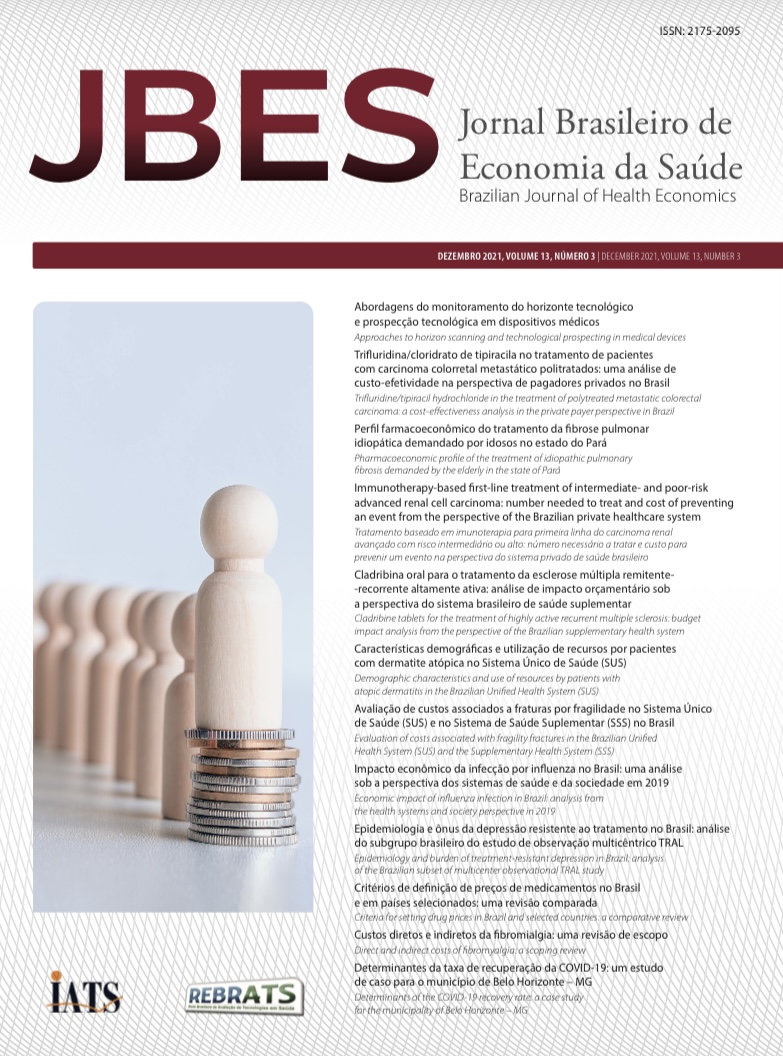Immunotherapy-based first-line treatment of intermediate- and poor-risk advanced renal cell carcinoma: number needed to treat and cost of preventing an event from the perspective of the Brazilian private healthcare system
DOI:
https://doi.org/10.21115/JBES.v13.n3.p258-67Keywords:
renal cell carcinoma, axitinib, ipilimumab, nivolumab, pembrolizumab, costs and cost analysis, health care costsAbstract
Objective: To perform an analysis over time of the number needed to treat (NNT) and the cost of preventing an event (COPE) for nivolumab + ipilimumab (NIVO+IPI) and pembrolizumab + axitinib (PEMBRO+AXI) as first-line treatments for advanced renal cell carcinoma patients with intermediate or poor-risk, under the Brazilian private healthcare system perspective. Methods: The NNT for overall survival (OS) and progression-free survival (PFS) from 12-month to maximum available follow-up from CheckMate 214 and KEYNOTE-426 studies were used to estimate the COPE. Treatment costs were estimated considering the labeled dosing and median PFS as a proxy for treatment duration. Results: The OS NNT for NIVO+IPI decreased from 12 to 8 and for PEMBRO+AXI increased slightly from 7 to 8 at 12 and 42 months, respectively. For PFS, NNT for NIVO+IPI decreased from 15 to 6, and for PEMBRO+AXI increased from 7 to 10 at 12 and 30 months. The estimated treatment cost is R$ 638,620 for an estimated median of 11.2 months of NIVO+IPI treatment and R$ 966,818 for 13.8 months of PEMBRO+AXI treatment. COPE for OS at 12 and 42 months was R$ 7,663,440 and R$ 5,108,960 with NIVO+IPI and R$ 6,047,417 and R$ 7,734,547 with PEMBRO+AXI. For PFS, COPE at 12 and 30 months was R$ 9,579,300 and R$ 3,831,720 with NIVO+IPI and R$ 6,047,417 and R$ 9,668,184 with PEMBRO+AXI. Conclusions: Treatment with NIVO+IPI results in lower COPE than PEMBRO+AXI from month 18 onwards, driven by lower treatment costs and improved NNT over time with NIVO+IPI.






